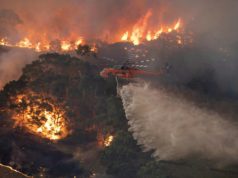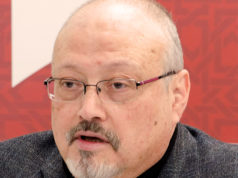Flickr / CC-BY-SA-3.0 / GFDL
1 – Felix Baumgartner Becomes the First Person to Break the Sound Barrier
On 14 October 2012, Austrian skydiver Felix Baumgartner flew approximately 39 kilometers (24 miles) into the stratosphere over New Mexico, United States, in a helium balloon before free falling in a pressure suit and then parachuting to Earth.
Having achieved world records for parachute jumps, skydiving, and BASE jumping, Baumgartner began working with a team of scientists on Red Bull Stratos, a high altitude diving project in 2010.
The project proposed for Baumgartner to make a 36,600 m (120,100 ft) jump from a capsule suspended from a balloon filled with helium, intending to become the first parachutist to break the sound barrier.
The total jump, from the capsule to ground landing, lasted approximately ten minutes.
The free fall was expected to last between five and six minutes, but Baumgartner deployed his parachute after 4 minutes and 19 seconds.

Reaching 1,357.64 km/h (843.6 mph), or Mach 1.25, Baumgartner broke the sound barrier on his descent, becoming the first human to do so without any form of engine power.
The feat also saw Baumgartner break two other world records, the highest altitude for a manned balloon flight of 38,969 m (127,851 ft), and the biggest vertical distance of freefall of 36,402.6 meters (119,431 ft).
2 – Hurricane Sandy Wreaks Havoc Across Cuba, Haiti, Jamaica, and the U.S. Eastern Seaboard
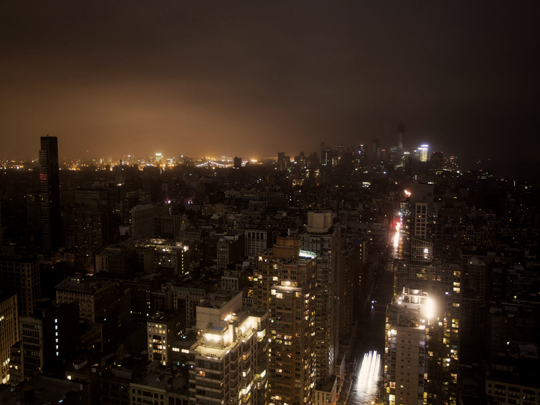
Hurricane Sandy was the deadliest and most destructive hurricane of the 2012 Atlantic hurricane season.
It inflicted nearly $70 billion in damage, it was the second-costliest hurricane on record in the United States at the time.
Sandy was a Category 3 storm at its peak intensity when it made landfall in Cuba. It became the largest Atlantic hurricane on record, with tropical-storm-force winds spanning 900 miles (1,400 km).
On 22 October, Sandy developed from a tropical wave in the Caribbean and quickly strengthened to a Tropical Storm. On October 24, Sandy became a hurricane as it made landfall near Kingston, Jamaica.
On October 25, Sandy hit Cuba as a Category 3 hurricane, then weakened to a Category 1 hurricane. Sandy made landfall on the U.S. mainland on 27 October, causing havoc, before gradually weakening in the proceeding days.
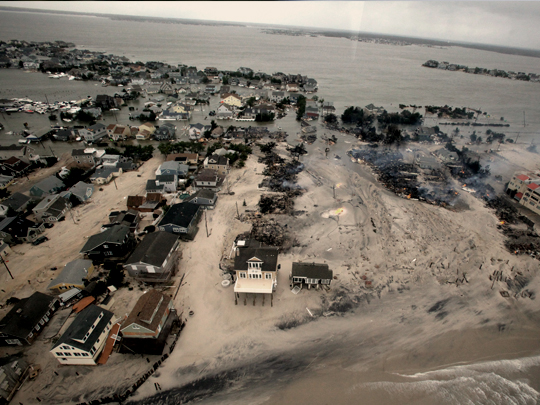
It is estimated at least 233 people were killed by Sandy across eight countries. In Jamaica, 70% of residents were left without electricity and blew roofs off buildings, while Haiti was left with food shortages and about 200,000 homeless.
In Cuba, there was extensive coastal flooding and wind damage, with about 15,000 homes destroyed.
In the United States, 24 states were affected, including the entire eastern seaboard, with particularly severe damage in New Jersey and New York.
The following storm surge hit New York City on 29 October, flooding streets, tunnels and subway lines, and cutting power around the city. Damage in the United States amounted to $65 billion.
Hurricane Sandy sparked many scientists to warn that warming oceans and greater atmospheric moisture were intensifying storms while rising sea levels were worsening coastal effects.
3 – The Taliban Shoot 14-year-old Malala Yousafzai in the Head and Neck – She Survives
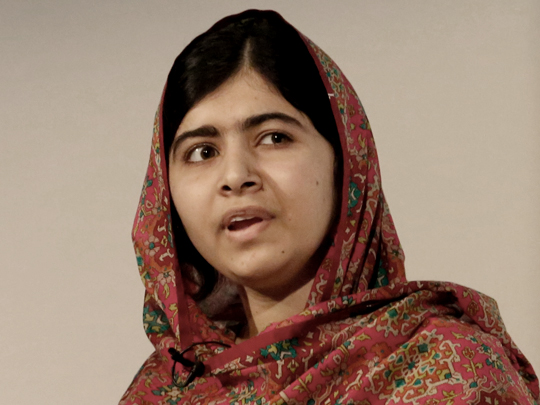
In 2009, Malala Yousafzai then aged 11, began writing a blog under a pseudonym for the BBC Urdu, detailing her life during the Taliban occupation of Swat.
The following summer, New York Times journalist Adam B. Ellick made a documentary about her life.
As a result, Malala rose to prominence through print and television interviews. She was nominated for the International Children’s Peace Prize by activist Desmond Tutu.
On 9 October 2012, after sitting an exam, Malala was on a bus in the Swat District when she and two other girls were shot by a Taliban gunman in an assassination attempt in retaliation for her activism.
The gunman fled the scene after Yousafzai was hit in the head with a bullet and remained unconscious and in critical condition. However, as her condition later improved, she was transferred to a hospital in Birmingham, UK.
The assassination attempt sparked an international outpouring of support for Yousafzai. The Taliban was internationally denounced by governments, human rights organizations and feminist groups.
Taliban officials responded to condemnation by further denouncing Yousafzai, indicating plans for a possible second assassination attempt, which was justified as a religious obligation.
Following her recovery, Yousafzai became a prominent activist for the right to education, founded the Malala Fund, a non-profit organization, and co-authored I Am Malala, an international bestseller.
In 2014, Malala was the co-recipient of the Nobel Peace Prize, along with Kailash Satyarthi of India. Aged 17 at the time, she was the youngest-ever Nobel Prize laureate. She has also been named as one of the world’s most influential people by Time magazine.
4 – The Benghazi Attack
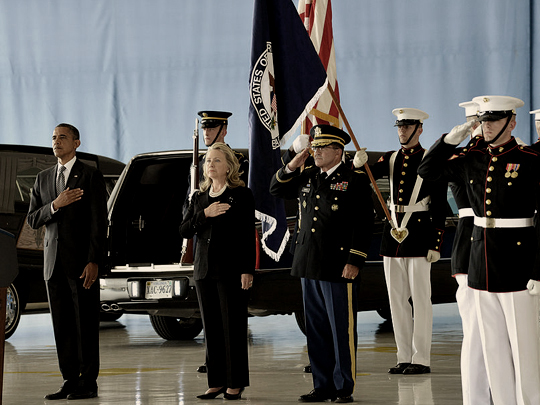
Late on September 11, 2012, members of Ansar al-Sharia attacked the American diplomatic compound in Benghazi, Libya, resulting in the deaths of U.S. Ambassador to Libya J. Christopher Stevens and U.S. Foreign Service Officer Sean Smith.
In the early hours of September 12, the group launched a mortar attack against a CIA annex approx. one-mile (1.6 km) away, killing CIA contractors Tyrone S. Woods and Glen Doherty, wounding ten others.
Stevens was the first U.S. ambassador killed in the line of duty since 1979. In response, the United States increased security at diplomatic and military facilities worldwide.
Many Libyans condemned the attacks and staged public demonstrations condemning Ansar al-Sharia. The Islamic militant group had been formed during the 2011 Libyan civil war in opposition to leader Colonel Muammar Gaddafi.
Subsequent investigations found that the attack was premeditated, although rioters and looters not originally part of the group may have joined in after the attacks began.
Four career State Department officials were criticized for denying requests for additional security at the facility prior to the attack. Eric J. Boswell, the Assistant Secretary of State for Diplomatic Security, resigned under pressure, while three others were suspended.
In her role as Secretary of State, Hillary Clinton took responsibility for the security lapses.
There were persistent accusations against President Obama, Hillary Clinton, and Susan Rice, but ten investigations found no wrongdoing by them.
In June 2014, militia leader Ahmed Abu Khattala was captured in Libya by U.S. Army Special Operations Forces, in coordination with the FBI.
5 – The Mayan Calendar Reaches the End of its Cycle
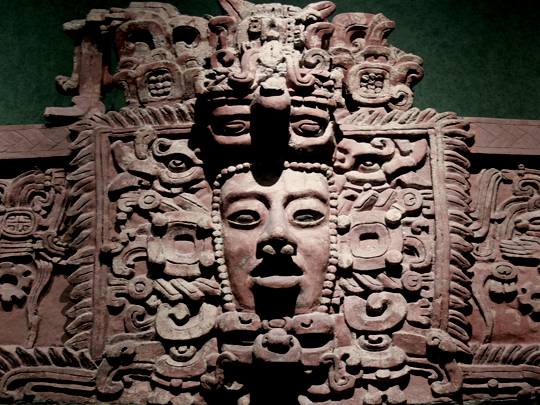
The 21st December 2012 marked the end-date of a 5,126-year-long cycle in the Mayan calendar (Mesoamerican Long Count calendar), with some people suggesting the date would mark the end of the world or a potential catastrophe.
The countries that were part of the Maya civilization, Mexico, Guatemala, Honduras, and El Salvador, held events to commemorate the date, with main events at Chichén Itzá in Mexico, and Tikal in Guatemala.
A New Age interpretation believed the date marked the start of a period during which Earth and its inhabitants would undergo a positive physical or spiritual transformation.
Scholars from various disciplines quickly dismissed predictions of any cataclysmic events. Professional Mayanist scholars stated that no Mayan accounts forecast any such event taking place.
Astronomers rejected the various proposed doomsday scenarios as pseudoscience, which were easily refuted by elementary astronomical observations.
It is estimated about 50,000 people visited Mexican archaeological sites on 21 December, such as Chichén Itzá in Yucatán, Tulum in Quintana Roo, and Palenque in Chiapas. A fire ceremony was held at dawn in the main plaza of Tikal in Guatemala.
6 – The Sandy Hook School Massacre
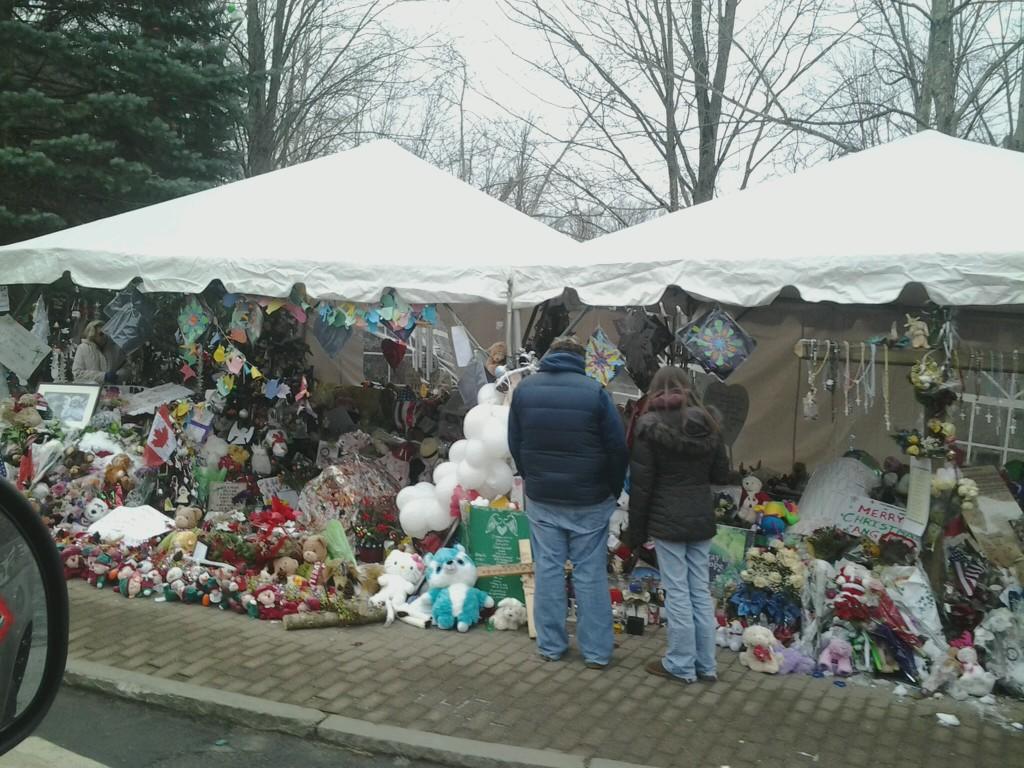
The Sandy Hook Elementary School shooting occurred on 14 December 2012, in Newtown, Connecticut, United States.
In total, 26 people, including 20 children aged between six and seven, and six adult staff members, were killed by 20-year-old Adam Lanza.
Before driving to the school, Lanza had shot and killed his mother in their home. Lanza committed suicide by shooting himself in the head as the first responders arrived.
Lanza had shot his way through a glass panel next to the locked front entrance doors of the school before he carried out the massacre and turning the gun on himself over a period of about five minutes.
The tragedy is the deadliest mass shooting at either a high school or grade school in U.S. history and the fourth-deadliest mass shooting by a single person in U.S. history.
There had only been one homicide in Newtown in the ten years prior to the school shooting.
The school would be demolished in 2014 and replaced by a new building in 2016, on the same site but with a different footprint.
The shooting prompted a renewed debate about gun control in the United States, including proposals for a universal background-check system, and new gun legislation banning the sale and manufacture of certain types of semi-automatic firearms.
The Connecticut State Attorney’s office concluded Lanza acted alone and planned his actions, but provided no indication why he did so, or why he targeted the school.
In November 2014, a report issued by the Office of the Child Advocate said that Lanza had Asperger’s syndrome and as a teenager suffered from depression, anxiety, and obsessive-compulsive disorder.



